
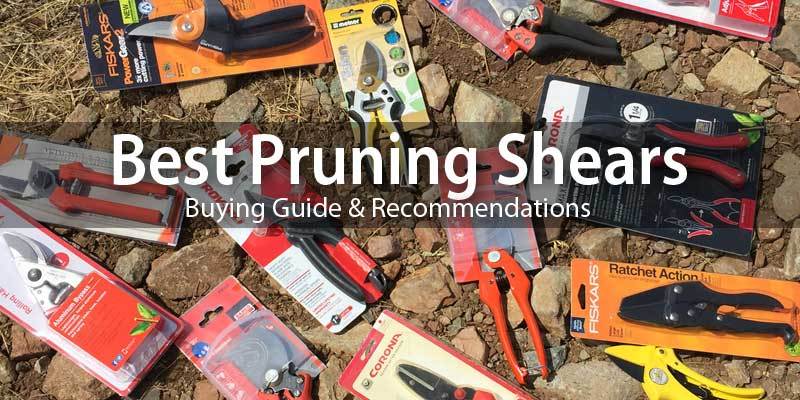
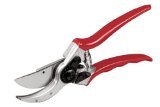 UPDATED FOR 2016!
UPDATED FOR 2016!
Pruners (also called clippers, pruning shears, or secateurs) are used to trim and shape plants, deadhead, prune out dead or damaged foliage and small branches, and cut back perennials. They’re one of the most-used gardening tools so it’s important to get a pair that works best for you.
Pruning shears generally won’t cut through anything that’s over .75 inches in diameter (some will cut up to 1 inch, but that will take a fair bit of grip strength). If you’re cutting something thicker than that, you’ll need a pair of loppers (see our Best Loppers for Pruning review) or a pruning saw.
Pruning tools come in a variety of styles and price points and it can be confusing trying to choose the right one. In this article, we review the features to consider when buying pruning shears so that you’ll know what to look for in choosing a quality tool.
Or, if you’re simply looking for a comparison of a variety of recommended pruning shears (including photos), see our interactive Pruning Shears Comparison Guide showing details of over 15 pruners.
How to Choose the Best Pruning Shears for You
There isn’t just one kind of pruning shear that’s perfect for everyone. What works best for you will depend on your hand size and shape, grip strength, the type and amount of pruning you do, and your budget. But, in general, there are eight things you should consider when choosing pruners.
Important Considerations When Buying Pruning Shears
1. Type of Pruning Shears
There two basic types of pruners – bypass pruners and anvil pruners.
- Bypass Pruners. These are most popular. You get a clean cut from two curved blades that move past each other (hence ‘bypass’) just like a pair of scissors. One of the blades is sharp and cuts as it moves by a thicker unsharpened blade.
- Anvil Pruners. These have a one straight blade that cuts as it closes onto a flat edge (or ‘anvil’) – giving an action similar to a knife on a chopping board. They are usually slightly bulkier than bypass pruners which can make them tricky to get into tight areas. Because the blade often crushes stems when cutting (unless the blade is extremely sharp), these are best used on dead wood, rather than live plants.
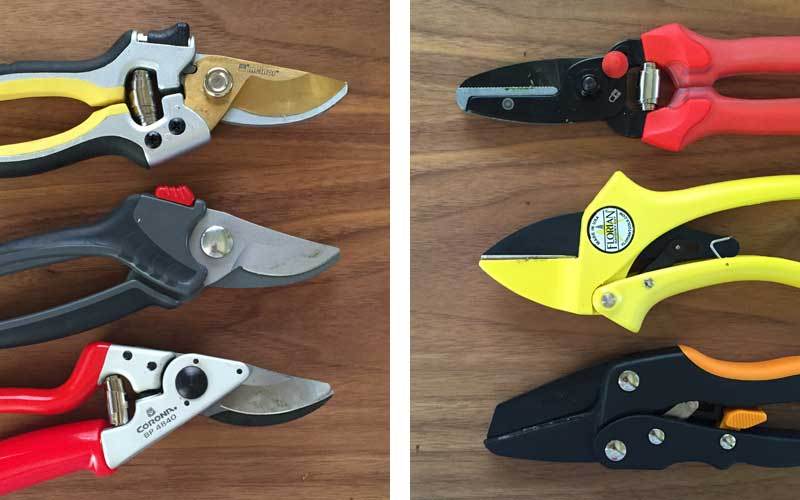
LEFT: Bypass pruners. RIGHT: Anvil pruners. Notice that bypass blades are curved while anvil blade are straight.
You’ll also find a third type of pruning shear, although it’s really a type of anvil pruner, rather than a separate class.
- Ratchet Pruners. These have a clever extra mechanism to make light work of tough cuts. As you squeeze ratcheting pruning shears, they latch so you can release and squeeze again, performing the cut in easy steps rather than one go. It’s particularly good for those with less strength in their wrist, or for cutting thicker stems that regular shears cannot handle.
We recommend bypass pruners, rather than anvil or ratchet pruners, as these generally give the cleanest cut, are easiest to use, are more likely to have replacement parts, and are good for a range of pruning tasks.
2. Availability of Replacement Parts
Not all pruners allow you to replace parts that break, wear out, or get damaged. Generally speaking, the higher quality pruners have replacements parts (usually available directly from the manufacturer or distributor – check their websites for details) while the least expensive do not (it’s more cost-effective to simply replace the pruners).
Keep in mind, however, that you get what you pay for – cheaper products may not stand up to frequent use and so may need to be replaced often. A slightly larger investment in a higher quality set of pruning shears may be cheaper in the long run.
3. Ergonomic Design
Not everyone likes so-called “ergonomic design” but, if you intend to prune or deadhead frequently, you’ll appreciate the way that these tools reduce wrist strain, require less pressure to close, and generally make the pruning experience more enjoyable. This type of design often includes soft-grip handles, angled blades, and a slightly curved shape. Pruners are also available with a rotating handle that turns with your hand as you open and close the handles (if you do a lot of pruning, this can make a huge difference in hand fatigue).
4. High Quality Steel Blades
Pruner blades are generally made out of steel. Sometimes they’re coated with a non-stick substance that resists sap and other sticky materials. Look for blades made of high quality, hardened or carbon steel – they last longer and are less likely to nick or need frequent sharpening. In fact, poorer quality blades don’t hold a sharp edge and so make pruning a laborious task that also damages plants.
Related to blade quality is how closely the blades pass as you open and close them; the closer the better. Quality pruning shears will allow you to adjust the tightness of the cutting mechanism and ensure that the blades are tightly held against each other.
5. Locking Mechanism
Most pruners have some sort of mechanism that allows you to lock it in the closed position. Not only is this safer (you can’t accidentally cut yourself on a sharp blade) but it also protects the blades when not in use.
However, some mechanisms work better than others. Look for a latch that’s easy to open and close (we particularly like the ARS ‘squeeze to open’ latch mechanism), doesn’t get in the way while you’re using the tool, and stays put when in the open or locked position. There’s nothing more annoying than having your pruning shears constantly locking up while you’re using them.
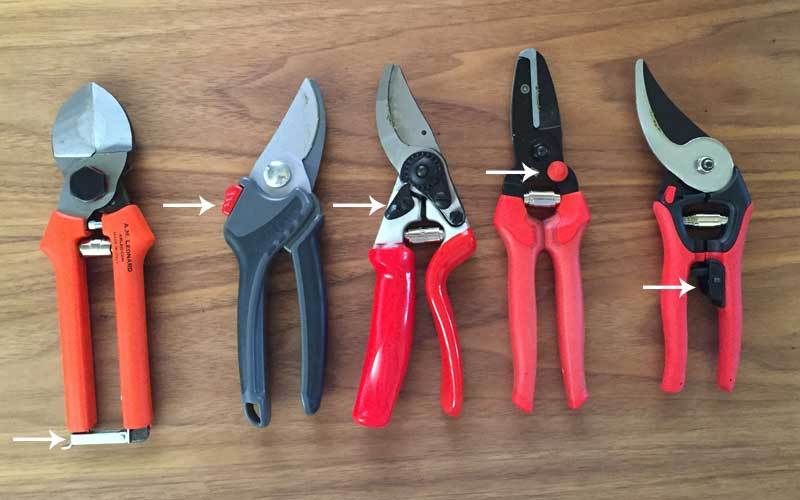
Examples of different locking mechanisms.
6. Strong Spring
Many pruning shears have a spring between the two handles that pushes the handles/blades apart when you relax your grip. This reduces the workload and hand fatigue.
There are two common types of springs: coiled metal and wire springs. Both work well but look for one that’s tightly attached to the handles so it doesn’t accidentally pop off or get pulled off by branches when pruning trees or shrubs. Some brands, like Corona, have a spring-like system integrated into the cutting head so there’s no change of the spring getting caught or popping off.
Pruners without springs are more like scissors – they rely on your fingers to pull the handles apart with each cut.
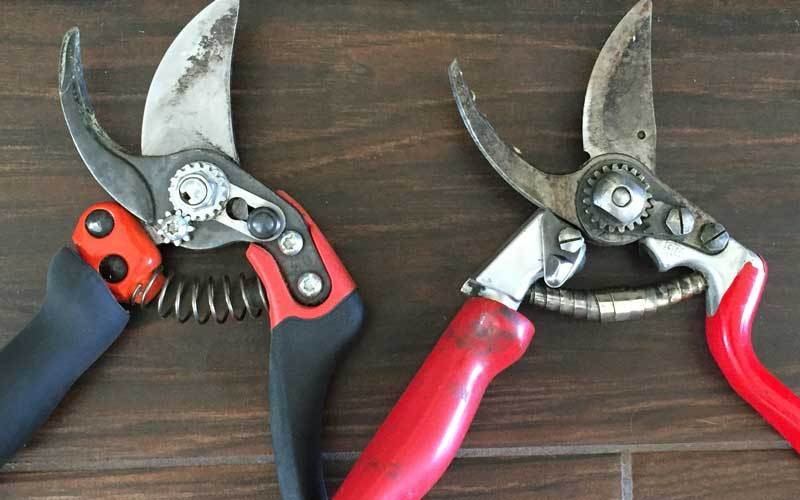
Some pruners, like those from Bahco and ARS, usually have springs (left). Others, like Felco, usually have a metal coil (right).
7. Easy to Disassemble
Not all pruning shears can be taken apart for cleaning and to more easily sharpen the blades. Over time, sap, dirt, and other residue builds up on the blades and between the handles, making it harder to close and open the pruners. It’s easiest to clean your pruners if you can take them apart. Without taking pruning shears apart, you cannot sharpen the entire blade, resulting in warped blades after multiple sharpenings.
8. Size and Weight
Consider both how well the pruning shears fit in your hand and how large a diameter branch they can comfortably cut. Most pruners will manage about a ½” branch, but some can cut up to 1” or more. Don’t be tempted to cut larger branches though; it will be harder to make a clean cut and can cause wrist or finger strain.
If you’ll be doing a lot of pruning, check the weight of the pruners – heavier ones will cause more fatigue.
So Which Pruners Are Right For You?
First, take stock of what kinds of things you’ll be pruning. Do you need a heavy-duty tool that will cut through 1-inch wood, or will a light-duty pruner for flowers and small shrubs be enough? That will help you decide whether you need a bypass, anvil or ratcheting anvil pruner.
Then determine your budget. Like most gardening tools, pruning shears come in a range of price points and, while you typically get better quality at higher prices, it’s not always necessary to pay more to get what you need (see the point above).
To help you make the right decision, we’ve provided two different ways of choosing pruners – by brand and by rating (although that only applies to the pruning shears that we’ve reviewed).
Highly Recommended Pruning Shears
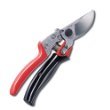
ARS HP-VS8R Rotating Handle Bypass Pruner![]()
Squeeze-to-open lock, extremely sharp blades and smooth cutting action make these my personal favorite.
Bahco PX-L2 Bypass Pruner![]()
Smooth, easy, and precise cutting. Available in small, medium and large.

Bahco Ergonomic Pruner with Rotating Handle PXR-L2
Easily makes beautiful clean cuts. Rotating handle reduces fatigue. Available in S, M, L.

Corona BP4840 Rolling Handle Bypass Pruner
Cuts and feels like a pruner that costs twice as much.
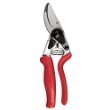
Felco F-7 Pruner with Rotating Handle
Nicely balanced, and makes smooth, clean cuts.
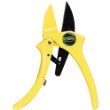
Florian Ratchet-Cut Anvil Hand Pruners
Surprisingly sturdy and easy to work with. Makes tough cuts feel easy.
Recommended Pruning Shears

Fiskars Ratchet Anvil Pruner (7685)
Makes quick work of cutting through even tough mesquite branches.
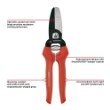
Corona AP 3234 ComfortGEL Anvil Pruner
Clean cuts, comfortable handles, easy to use.
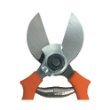
A.M. Leonard Double Cut Hand Pruners
Unusual here in the USA. Makes nice clean cuts through harder stems.
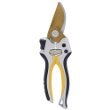
Melnor Talon Titanium Bypass Pruner
Just works OK but at this price point it’s hard to beat.
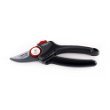
Troy-Bilt Comfort Plus Bypass Pruner
A little clunky but it gets the job done.
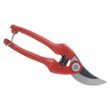
Bahco P126-22-F Bypass Secateurs
A nice entry level pair of pruning shears.
Not Recommended Pruning Shears
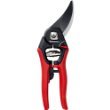
Corona BP3350 Bypass Pruner with Adjustable Grip
Better for larger hands; pinches smaller hands.

Corona BP 7450 Convertible Pruner/Lopper
An interesting idea but it simply doesn’t work well as either a pruner or lopper.

Fiskars PowerGear2 Pruner
Difficult to cut through anything; the “power gear” doesn’t make it easier.
Choosing Pruning Shears Based on Brand
For a novice gardener who won’t be doing much pruning or deadheading, the Corona, Fiskars, and Dramm pruners are an excellent choice. They’re affordable and long-lasting, and some can be taken apart to clean and sharpen.
If you’ll be doing more pruning work, you can’t beat a Felco, ARS, or Bahco pruner. While they’re more expensive, they are readily available, will last forever, and parts can be easily cleaned, sharpened, and replaced. There are models for smaller hands, lefty’s, and with rotating handles.
And don’t forget a holster or scabbard to carry your pruners while you’re working in the garden. This will protect both you and the pruners from harm, and will keep them clean.
For photos and details on specific pruners from the brands below, see our Best Pruning Shears Comparison Guide.
Felco Pruners
Felco’s are the pruning shears you hear about most often and, although many gardeners swear by them, that doesn’t necessarily mean they’re the best pruners available. They’re available in a variety of styles, including the classic F-2 (and F-6 for those of us with smaller hands), the ergonomic F-8, and the F-7 with a rotating handle (plus the F-12 for smaller hands). There’s even the F-9 for leftys. All are an excellent choice for general gardening work. The blades are made of hardened steel and have a handy wire cutting notch. The pruners can be taken apart for cleaning and sharpening and replacement parts are easily available. Prices generally range from $50 to $70, depending on the model.
Felco F-2 Classic Manual Hand Pruner![]()
Felco F-6 Classic Pruner For Smaller Hands![]()
Felco F-8 Classic Pruner with Comfortable Ergonomic Design![]()
Felco F-7 Gardening Hand Pruner with Rotating Handle![]()
Felco F-12 Classic Pruner For Smaller Hands![]()
Felco F-9 Classic Pruner for Left Handers![]()
Felco F-910 Leather Holster for Pruning Shears![]()
ARS
ARS pruners are currently our favorite for avid gardeners and professionals. You can see our review of the HP-VS8R pruners here. The one-handed, squeeze-to-open feature (to unlatch the blades) is a nice innovation, and the chrome-plated blades (to resist sap and corrosion) are extremely hard, needing less frequent sharpening than other brands. An ergonomic design adds to the comfort and functionality. Priced between $40 and $60.
ARS HP-VS8R 8″ Rotating Handle V Series Signature Heavy Duty Pruner![]() – READ OUR REVIEW
– READ OUR REVIEW
ARS HP-VS8Z Signature Heavy Duty Pruner![]()
ARS 8-Inch Hand Pruner HP-V8Z![]()
ARS 7-Inch General Duty Pruner HP-130DX – READ OUR REVIEW
Bahco (formerly Sandvik)
Bahcos are the pruner of choice for many gardeners and arborists who do a lot of pruning. They’re ergonomically designed (including the PXR series with a rotating handle), tough as nails, and come in a variety of sizes to fit any hand. The coated blades resist sap and dirt and can be sharpened or replaced as needed.
Bahco Ergo Bypass Pruner PX-M2![]() (medium size)
(medium size)
Bahco Ergo Bypass Pruner PXR-M2![]() (medium size with rotating handle)
(medium size with rotating handle)
Bahco PROF-H Leather Holster for Pruners and Folding Saws![]()
Corona
Corona pruners are a nice middle ground between the pricier brands (e.g., Felco, ARS, Bahco) and the cheap (and short-lived) varieties. They can be taken apart and replacement parts are easy to find. The spring stays put, they’re easy to latch closed, and the sap groove and wire cutter on the blades are a nice touch. However, the classic models are quite uncomfortable if you’ll be doing a lot of pruning; the ergonomic BP 6590 may be more comfortable. Priced between $20 and $30.
Corona BP 3160 Classic Cut Forged Bypass Pruner, 3/4″ Cut![]()
Corona BP 6590 Comfort Grip Bypass Pruner, 1″ Cut![]()
Corona Clipper #ac 7220 Leather Scabbard![]()
Fiskars
These pruners are available at most garden centers or big box stores for a reasonable price. With adjustable blade tension, a sap groove to help keep the blade clean, a 1″ cutting capacity, and an ambidextrous design (good for both righties and lefties), the 9124 is a good choice for the home gardener. For those looking for something more ergonomic, the UltraBlade PowerGear pruner offers a curved, cushioned handle and a special gearing technology that allows you to cut with three times less effort than regular pruners; especially good for those with less grip strength. Cost ranges from $15 to $30 for the various styles.
Fiskars 9124 Professional Bypass Pruning Shears![]()
Fiskars 377363-1002 UltraBlade PowerGear Bypass Pruner with GripEase![]()
Dramm
Dramm has discontinued their cutting tool lines but you can still find them online so we’ve included them here because they have some very nice pruners and snips for light-duty gardening use. Plus they come in a range of bright, fun colors. With stainless steel blades to resist rust, a latch to keep the blades locked, and a 1/4″ cutting capacity, these are best used for deadheading, cutting flowers, or handling very thin branches; perfect for balcony gardens. Priced under $20.
Dramm 18016 Stainless Steel Compact Pruner, Berry![]()
Dramm 19015 Cutting Tool Holster With Durable Nylon and Metal Belt Clip, Black![]()
SOURCE:http://gardeningproductsreview.com/best-hand-pruners/